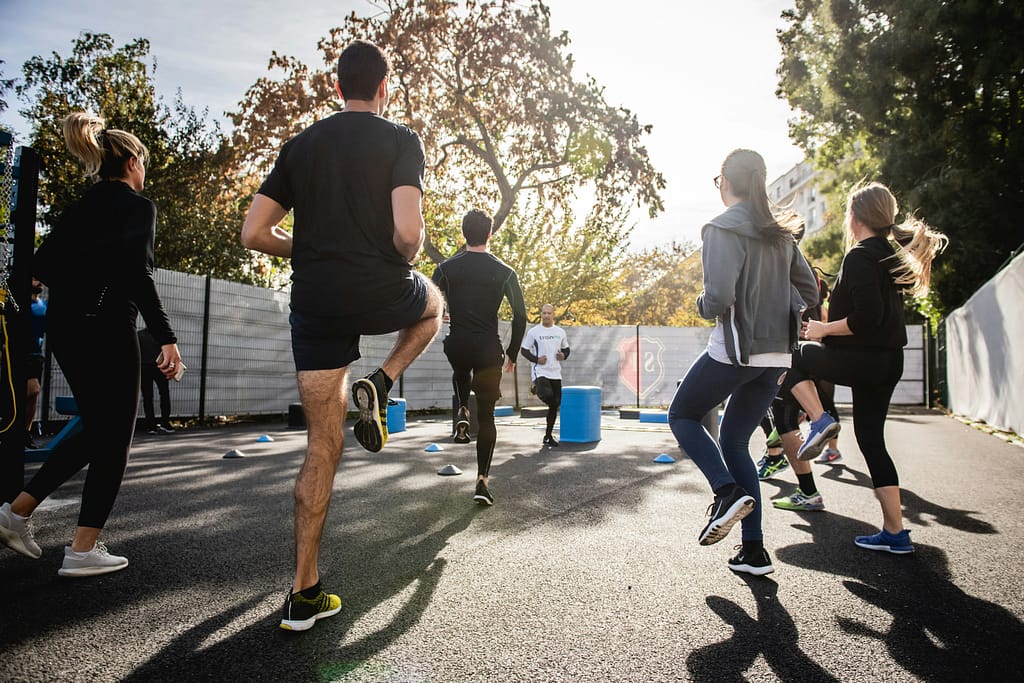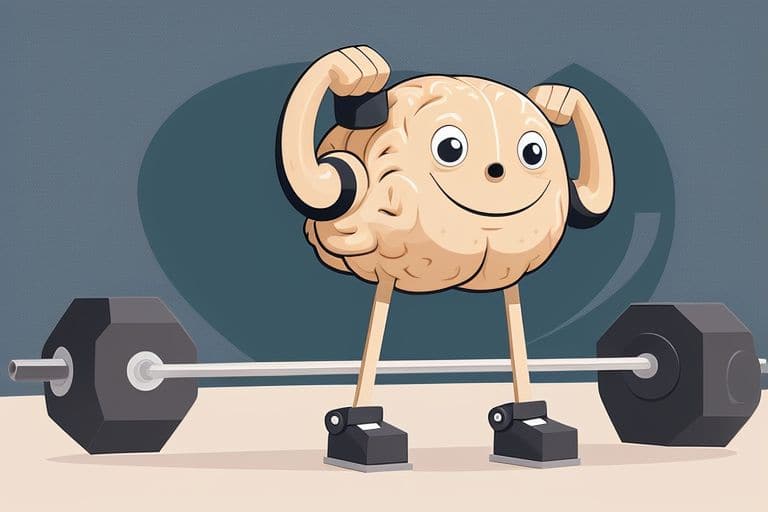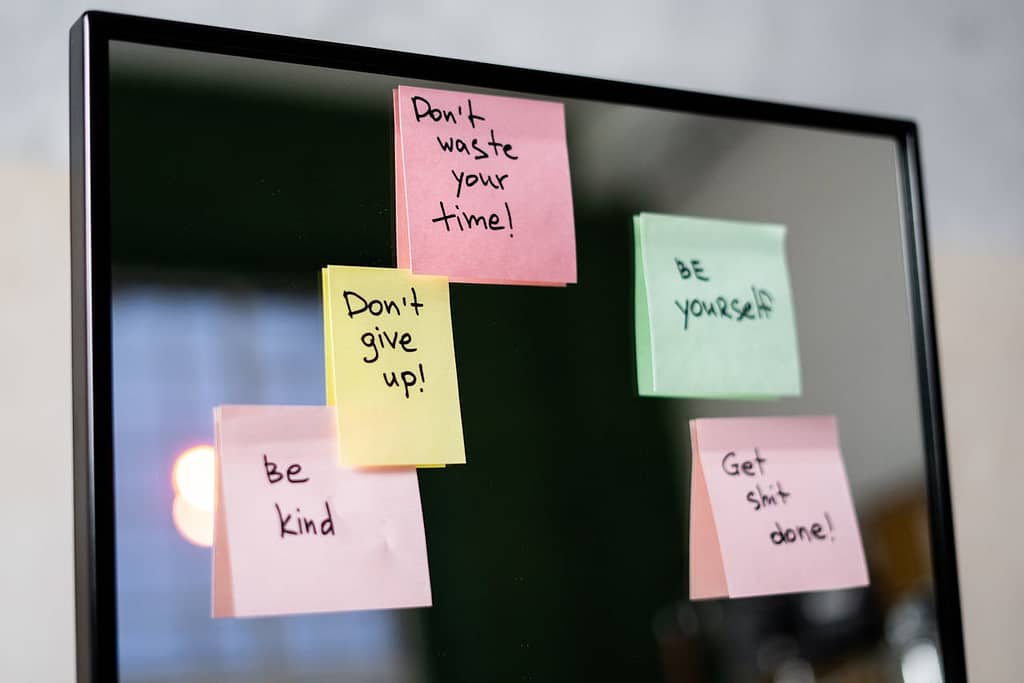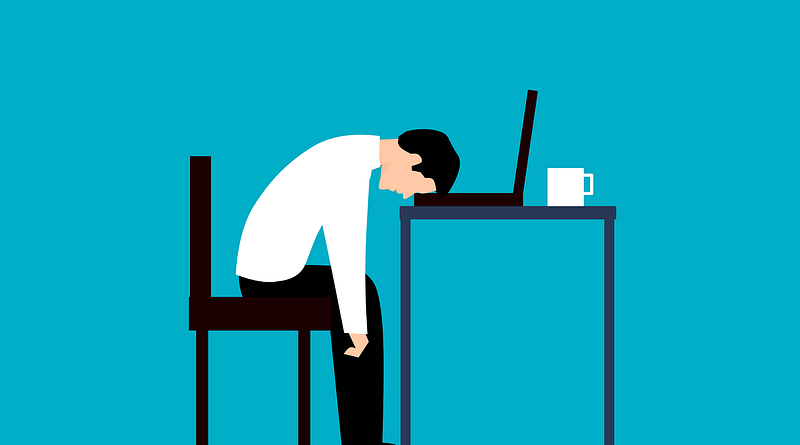Hack Your Motivation: 7 Proven Hacks for ADHD
Struggling with motivation? Whether you have ADHD or not, discover 7 powerful brain hacks that actually work. From body doubling to temptation bundling, these science-backed strategies will transform how you get things done. Skip intro
Table of Contents
Overview
Life with ADHD is a unique journey, often affected by the ebb and flow of “happiness hormones”—a fascinating group of neurotransmitters and hormones that shape our positive emotions, pleasure, and overall well-being.
Notably, dopamine, norepinephrine, and serotonin are the main actors, fluctuating between moments of hypoactivity and hyperactivity.
This neurochemical dance often creates a mismatch between our energy levels and the demands of the moment.[1]
In these dysregulated moments, motivation and commitment doesn’t usually arrive when needed.
But more like at 2 a.m., when you suddenly decide to make life changing plans, start your new training regime, or finally launch that business.
To complicate matters further, with today’s technology, our dopamine receptors are continuously bombarded with quick-hit stimuli.
This further exacerbates ADHD symptoms and may even make non-ADHD individuals feel like they’re on an emotional rollercoaster.
But fear not! Below we’ve compiled 7 scientifically supported hacks to help you navigate the unique challenges of ADHD.
These strategies are designed to boost your motivation and maintain productivity, even when you’re riding on those waves of unpredictable happy hormones.
Disclosure
As an Amazon Associate and Mindvalley Affiliate, I earn from qualifying purchases. Some of the links below are affiliate links, meaning I earn a small commission if you purchase through them—at no extra cost to you. I only recommend products or courses I personally rate or think you’ll love!
1. Positive Self-talk: Your Biggest Cheerleader
Hard talk doesn’t work as well as we think. Specifically, negative self-talk is to be avoided, as it creates a counterproductive cycle.
By increasing your anxiety, it decreases your motivation and your task-performance, setting off a chain-reaction that ultimately hinders your overall productivity.[2]

When you have an “unsuccessful” day (by your own standards), telling yourself that “you’re lazy, useless, and a failure”, will not make it more likely that you will get the task done next day.
Quite the opposite—negative self-talk will increase your cortisol levels, task-related anxiety, and crush your self-confidence.[3,4]
Those with ADHD are particularly sensitive to this, as they already experience low self-esteem due to difficulties with attention, time management, and impulse control.
In contrast, positive self-talk can boost performance, self-efficiency, and resilience.
This involves replacing your negative thoughts with loving and encouraging ones. Alongside reframing your self-perception with constructive and affirming inner dialogues.
Such as: “I may not have finished everything today, but I made progress. And tomorrow is a fresh start.”
Practicing self-love and talking to yourself as you would with your best friend who needs caring advice, is essential to maintain a wholesome mental balance.
In addition, celebrating every small win will help you stay on a roll, persisting through your tasks.
Negative self-talk isn’t just demotivating—it rewires your brain for failure.
Instead, reprogram your subconscious for success with Be Extraordinary course by Mindvalley, designed to help you master your mindset and unleash peak performance!
2. Exercise: The Ultimate Happy Hormone Booster
The significance of exercise cannot be overstated when it comes to managing ADHD.
Engaging in physical activity helps release a surge of dopamine, serotonin, and norepinephrine, which can alleviate ADHD symptoms such as poor impulse control, anxiety, and depressive symptoms.[5]

This makes sense, as the irregular activity of these “happy hormones” is exactly what causes difficulty with task initiation, task completion, and emotional regulation in those with ADHD.
Consequently, exercise can help balance these neurotransmitters and drastically improve symptoms like mood swings, anxiety, and difficulty concentrating.[6]
Moreover, exercise promotes blood flow and oxygenation to the brain, creating an environment conducive to enhanced focus and productivity.
Specifically, it increases blood flow to the prefrontal cortex (PFC), the area of our brain responsible for attention, decision-making, and impulse control.[7] This is particularly valuable for those with ADHD.[8]
Beyond its role as a mood and productivity enhancer, exercise also helps to dissipate those endless bouts of restlessness through increased energy expenditure. This release of nervous energy further facilitates a calmer mental state.
Therefore, exercise serves both as a natural regulator of “happy hormones” and a brain function enhancer, effectively managing ADHD symptoms and boosting your everyday performance.
Looking for a structured, time-efficient way to train at home?
Advanced Home Workouts by Mindvalley offers a minimal-time, high-impact approach to mastering strength training and dynamic circuits. Perfect for keeping your energy levels up and your mind sharp.
3. Meditation: The Mind’s Gym
Think of meditation as a workout for your brain, balancing and strengthening it at the same time.

Meditation balances your brain by synchronising your brain’s two hemispheres through increased alpha brain waves and corpus callosum activation—the bundle of nerve fibres that connect your two brain’s hemispheres.
It strengthens it by adding to and enhancing existing neural connections.
Meditation is therefore associated with neuroplastic changes, contributing to the creation of new synapses and networks. Essentially, regular meditation fosters a form of “muscle growth” for your brain.[9]
And just like exercise, meditation also balances our usual rollercoaster of happy hormones: dopamine, serotonin, and norepinephrine. It’s like finally finding a chill-out zone for your mind.
Thus, meditation has a two-fold effect.
Firstly, it improves the structural functionality of your brain, leading to improved impulse control, enhanced focus, and therefore increased productivity.
Secondly, it helps your hormones find equilibrium between hyper- and hypoactivity.
Imagine a calmer, more balanced mind with fewer racing thoughts.
By training those mind-muscles regularly, you might find that meditation becomes your secret weapon in taming those sporadic bursts of creativity and restlessness.
And just like building muscles at the gym, consistency is the key, with daily practice recommended.
Need help getting started with meditation?
Mindvalley’s Meditation Course makes meditation simple and effective. In just 33 days, you’ll learn to meditate in just minutes a day—even if you’ve struggled before.
4. Temptation Bundling: Mix Work & Play
If you’re a fan of multi-tasking, and swear by it as the sole method to maintain your productivity—then temptation bundling is for you.

Temptation bundling is all about doing something you HATE with something you LOVE.[10] It’s like sneaking veggies into a smoothie, but for tasks.
For instance:
- Watching your go-to TV show whilst cleaning
- Listening to your favourite podcast whilst working out
- Sipping an extra special beverage during that admin task you’ve been avoiding
This trick leverages your brain’s reward system to make those dreaded tasks more appealing. It’s like tricking your mind into enjoying chores and limiting distractions.
However, you’ll need to experiment to find what works best for you. Not all tasks are equally suited for temptation bundling.
For mentally demanding tasks, you might prefer classical/lo-fi music or complete silence. On the other hand, for monotonous activities like cleaning, a podcast or your favourite TV show might be just the motivation you need.
The key is to find the right balance that keeps you engaged without becoming overly distracted.
Remember, the goal is to make those less enjoyable tasks more appealing, not to compromise your productivity.
Need a more structured approach to peak productivity?
Mindvalley’s Super Productivity course delivers a rapid-fire, 6-day blueprint that optimises your mind, body, and lifestyle for next-level efficiency. Becoming your ultimate ADHD hack.
5. Visual Cue: A Sight for Your Eyes
Ever tried lining up your exercise gear in the order you’ll use it before a workout?
Or plastering colourful sticky notes around your house with reminders like “do laundry” or “drink water”?
These are visual cues, and they’re game-changers for ADHD brains.
They’re like little cheerleaders scattered around your place, nudging you towards productivity.

The reason this helps is because visual cues tap into our visual learning style, providing external reminders that make tasks seem way more doable.[11]
Additionally, ADHD brains love visual stimuli. So why not use it to your advantage?
Ideas for Visual Cues:
- Lay out your exercise equipment in the order you’ll use them
- Pre-plan outfits and hang them on your bedroom door
- Put toothpaste on your toothbrush shortly before bedtime
- Get a big whiteboard, a pack of coloured markers, and write daily memos on there
- Use a “Done” jar: place a clear jar on your desk and each time you complete a task, fold up that sticky note and add it to the jar
The key is to make tasks look easy to start and achievable to finish.
This is easier when you break things down into small, manageable chunks, making the first step look very easy.
Even something as simple as seeing your gym clothes laid out, can give you that motivational kick needed to start the task.
But most importantly, you need to find out what works for you.
I personally enjoy setting up all things I’ll need for my bed-time routine when I start getting tired, but am less fussed about having clothes prepared for the next day, although it does help.
So make sure you experiment to see what visual hacks work for you. And before you know it, you’ll be ticking off tasks like a pro!
Well, more like—folded into your “Done” jar.
Want to sharpen your memory and focus even further?
Mindvalley’s Superbrain programme trains you in accelerated learning techniques, helping you retain and recall information effortlessly in just 15–20 minutes a day.
6. Pomodoro Technique: Time to Play
Ever heard of the Pomodoro Technique?
It’s a nifty time-management hack developed by Francesco Cirillo in the late 1980s. It’s all about working with your brain’s natural focus cycles to boost productivity.[12]

Here’s how it works: break your work into 25-minute chunks (called Pomodoros), each followed by a 5-minute break. During these 5-minute breaks, step away from your task. Maybe go grab a snack, or do a quick stretch.
Do a total of 4 Pomodoros (4 x 25 mins), each separated by that 5-minute break. Making it a total of 2 hours’ work.
After these two hours, treat yourself to a longer 15 to 30 minute break. This gives your mind a chance to clear without losing much momentum.
During this break, you can maybe take a walk, call a friend, or watch a quick episode of your favourite show.
So, why does the Pomodoro Technique work?
Well, it employs short, focused time frames for task completion, allowing you to work with intention during these concentrated bursts.
Just knowing that each work session is time-limited, combined with scheduled breaks, helps maintain your focus and motivation.
Consequently, it enhances your time management by fostering self-regulation and productivity while preventing burnout.

Also, tracking your progress by counting completed Pomodoros provides an instant motivation boost, reinforcing a sense of accomplishment along the way.[13]
Pro tip: Use a physical novelty timer or a specialised ADHD timer to stay on track. (affiliate links)
Avoid using your phone as a timer—it’s too easy to get distracted. In fact, consider hiding your phone or using a phone jail with a timer. (affiliate link)
Remember, the key is finding the rhythm that works for you: some folks prefer longer, some prefer shorter work periods.
Experiment and see what keeps you in the zone!
Looking for productivity hacks that go beyond time-keeping?
Check out Mindvalley’s 6-day Super Productivity course, which offers a range of productivity methods to optimise your mindset, habits, and efficiency—to help you become your most productive self.
7. Body-Double: Partner in Crime
Do you think you’d be more productive if someone was staring at you?
Let’s face it, when we’re alone and adulting, it’s way too easy to give in to temptations and half-ass tasks.
But what if one of your friends or family members was in the room with you?
Would you still as easily ditch your important to-do list to pick up your phone, binge-eat, or spend six hours on Netflix?

Your goal to boost productivity and unlock that elusive motivation might just be achieved by having a body-double.
A body-double is someone (usually a friend) who is present while you work. Doing their own thing, but providing a sense of accountability and focus.
This alone can help you stay on task. But we also tend to mirror the behaviours of those we like.
In addition, the presence of another human helps create a continuum of space and time.
Preventing you from staring at the wall for six hours.
However, body-doubles don’t necessarily need to be real-life humans!
A study on neurodivergent participants found that simply going to a café, having Live YouTube on, or watching videos of people studying, seems to do the body-doubling trick.[14]
Recent tech developments are now exploring how robots or AI can become your new body double. With 91% of students choosing to keep their robot study buddy after a week’s trial.[15,16]
Looks like robots may just turn out to be the accountability buddy we didn’t even know we needed.
Don’t have a body-double but still need accountability?
That’s exactly what The Champion Mindset is designed to do. This 14-day Mindvalley programme equips you with the self-coaching methodologies used by high-level CEOs, athletes, and elite performers; to cultivate drive, motivation, and relentless pursuit of excellence. No external accountability required—just the mindset of a champion, built from within.
Final Words
These 7 strategies offer powerful tools to navigate the challenges of ADHD and boost your motivation.
What makes them particularly effective is how they work with your brain’s natural tendencies rather than against them.
From working with body doubles for accountability to regulating neurotransmitters through exercise and meditation.
The key is understanding that motivation isn’t just about willpower—it’s about creating the right environment and systems for success.
Start by picking just one strategy that resonates with you and build from there.




